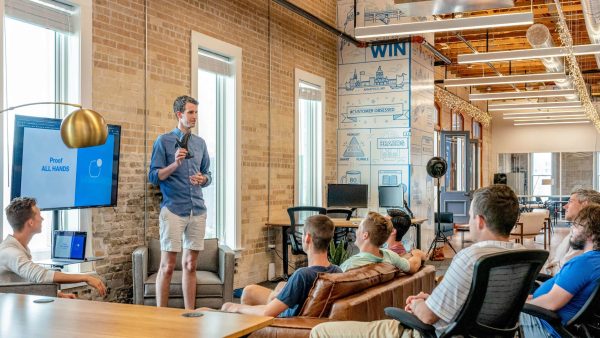Organizations in every industry currently face a skills gap due to the number of employees that have changed jobs or switched to contract work. The pandemic has encouraged the workforce to reexamine its needs. Many employees now prioritize flexible careers over stable ones.
This has resulted in a lack of retention in essential hard and soft skills, particularly leadership and communication skills. To compensate for this deficit, companies require new ways of upskilling and reskilling their workforce to stay competitive and retain their employees.
Knowing the skills that employees prioritize can prepare organizational leadership to design learning and development courses that attract and retain the employees who can close the gap.
Hard Skills vs Soft Skills
Hard and soft skills are both essential to job performance. Hard skills are those related directly to an employee’s job, such as the ability to work a machine or program. Soft skills are those that are based on behavior, such as an employee’s ability to communicate and collaborate with coworkers or think critically about their work.
Employees value hard skills because they represent a tangible advancement in their ability to perform their job. However, soft skills like leadership, communication, flexibility, and time management are becoming just as valued in employee development as hard skills in a changing economy.
An employee’s long-term performance in a company relies on both types of skills. Employees trained in additional skills beyond those that are strictly necessary to perform their jobs are more productive as well as more likely to stay with the company that trains them.
What is Currently Being Prioritized
According to the 2022 research report published by the Society for Human Resource Management, 70% of employees receive compliance training as part of their learning and development program. 50% receive upskilling training, which is the process of learning advanced skills to stay competitive in their field. 36% receive reskilling training, which focuses on learning adjacent skills that can help them succeed in the long term.
The other most common types of training an employee receives include soft skills (51%), product training (39%), and onboarding (36%). The big picture revealed by these numbers is a market that values training employees in new and adjacent abilities that go beyond the basic requirements of their position.
What Learners Want to Learn
Employees value learning the skills that advance their careers. Their top priorities are leadership and collaboration skills, followed by problem-solving.
Additionally, employees now value training that incorporates life skills such as mental health management, time management, and financial management. These adjacent skills represent growing demands in employees looking to be reskilled not only in their jobs but in the management of their whole professional lives.
Benefits of Knowing What Learners Prefer
Effective corporate learning prioritizes the skills that employees value. Employees engaged in continuous learning and development are more invested in their work, more productive, and more likely to stay with their current job.
A continuous learning environment also attracts new talent, helping companies stay competitive. Fostering an environment that gradually but consistently fosters diverse skill learning in employees is the secret to closing the skills gap in a post-pandemic workforce.


